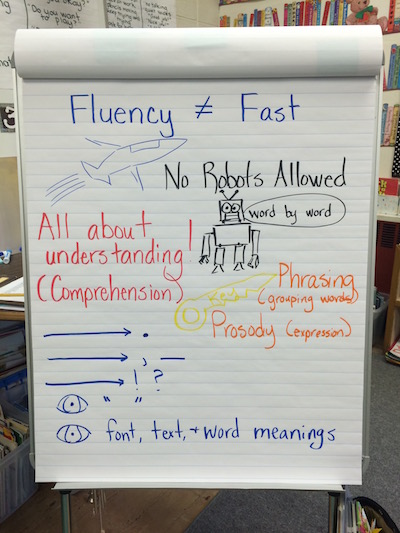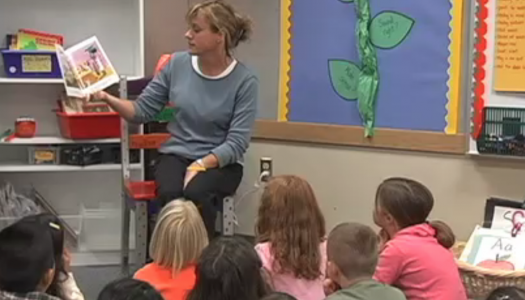Fluency Does Not Equal Fast
Join Our Community
Access this resource now. Get up to three resources every month for free.
Choose from thousands of articles, lessons, guides, videos, and printables.
Students sometimes get the idea that fluency means fast. It is up to us to teach them that fluency is much more than speed. One component of fluency is reading with the right speed to maximize comprehension. (We tend to read complicated directions at a slower rate than we do the latest People magazine.) In addition to rate, fluency is about phrasing and expression, or prosody. Students can improve their fluency by using punctuation to enhance their phrasing and prosody.
One way to teach these skills is to show students examples from books we have previously read aloud to them. That way we can use a sentence or two to illustrate, and since the books are familiar, students can focus on the teaching point without wanting to hear the rest of the story.
 Phrasing is about chunking groups of words together.
Phrasing is about chunking groups of words together.
Show examples from familiar books to demonstrate how we move from reading word by word, making ourselves read smoothly.
- Read all the way to the period.
- Read all the way to a comma or dash.
Prosody is all about expression.
Show examples from familiar books to demonstrate how we use punctuation clues to make our reading expressive.
- When you see a period, make your voice rather neutral.
- Take a clue from a question mark, and use intonation that reflects inquiry.
- Pay attention to an exclamation point, and match the intensity of the words on the page.
- Notice quotation marks, and change your voice to sound like the character.
Font, text size, and word meanings also help with expression.
- Authors make words bigger or smaller, and we make our voices louder with big words or quieter with small words.
- Thinking about the words we read will help us read with the right pace and expression. We read “She tiptoed into the deep, dark, dark, woods” more slowly and menacingly than we read “She ran as fast as she could to catch the bus before it pulled away from the curb.”
Depending on the age and readiness of your group, you can teach this in one brief lesson or over several short focus lessons, building the chart as you go.
For more resources, go to the Interactive CAFE Menu, look under Fluency, and click on Use punctuation to enhance phrasing and prosody. You'll find videos, books, assessments, Parent Pipelines, Ready Reference Guides, lessons, and downloads to help your students be beautifully expressive, fluent readers.







